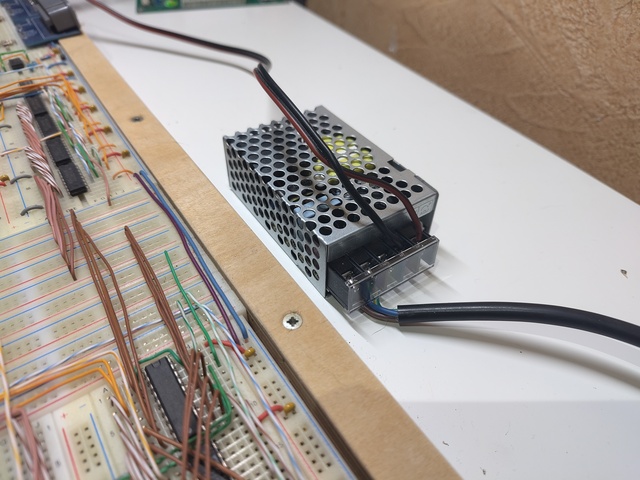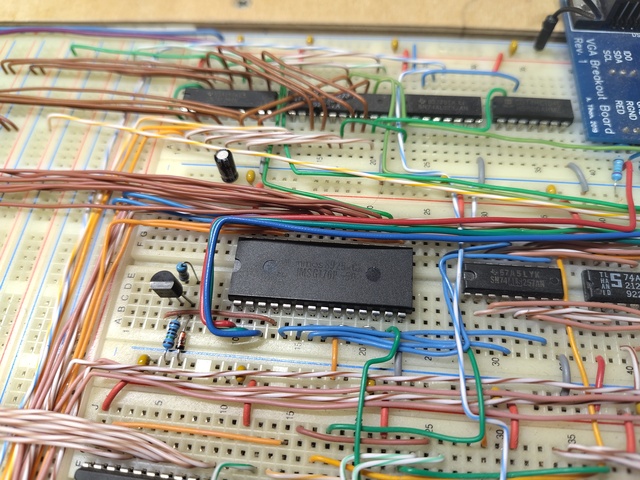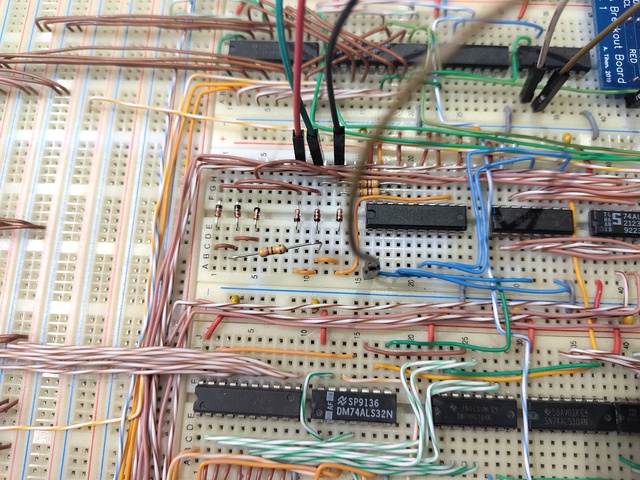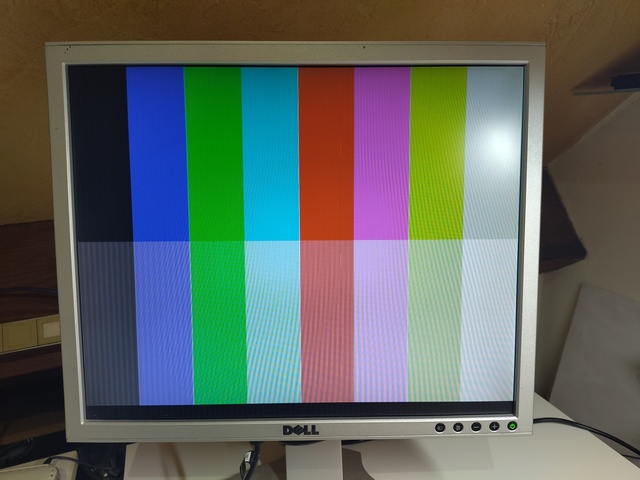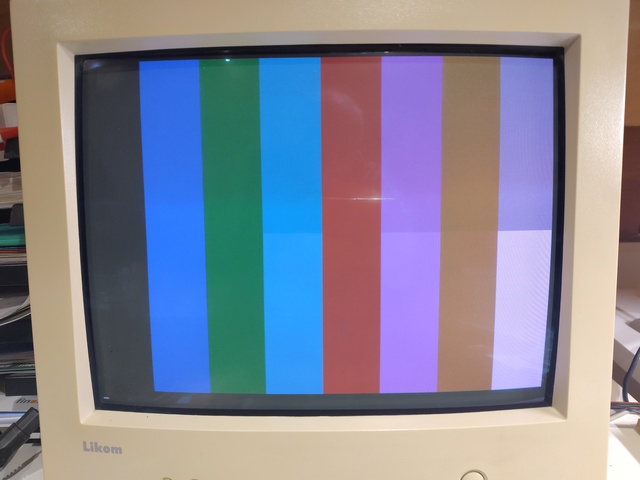This is a log entry about BB-88. See the project page to know more about it.
When I was building BB-88, it was sitting on my electronics bench, right below the roof window. And as you may suspect, it rained on it a few times, especially during summer when I tend to leave the window open. I don't know for sure if it's the main reason, but with time, the breadboard computer has become quite unreliable.
I've sprayed contact cleaner everywhere and tried to play with all the wires, hoping they would make better contact. I have also brushed the legs of all the ICs with a fiberglass pen, but with very little success.
Something else that I have noticed is that the ATX power supply I've been using doesn't seem able to regulate correctly with a load this light. Asides from the OPL2 "sound card" that needs ±12V, the entire computer runs on 5V, and it gets loaded to a mere 1.3A. When unloaded, the power supply gives a very neat 5.02V but it drops down to about 4.7V when powering BB-88. I have tried loading the other rails with biggish resistors: 4Ω on the 3.3V and 2.5Ω on 12V, but unfortunately it didn't help the 5V rail. Testing with two other power supplies showed an even larger drop on the 5V line.
Another part that causes a lot of problems is the palette RAMDAC. Sometimes it works, but most of the time the output is very noisy and the colors aren't setup correctly. Then if I replace the chip with another one from my components stash, it sometimes works for some time, or fails with different bad colors. This could indicate a component failure, but the behaviour seems to be consistent with two different brands (IMS and Analog Device). I do not exclude the possibility that I'm doing something wrong with the chips.
Hardware simplification
All these issues developed over time, and now that I know that I could build it, I'd rather make the computer more stable, at the expense of features that I don't actually use.
The first modification I made was to replace the ATX power supply with a small 5V MeanWell power supply1. That alone made the computer much more stable, but it also means that the OPL2 sound section is no longer powered, as ±12V is no longer available. Ripping this section apart later on will give room to make a more advanced color video output circuit, but for now let's keep things simple.
This is the VGA palette DAC that must go away to be replaced with a very crude circuit that converts the RGBI (Red, Green, Blue and Intensity) signals to VGA levels. This is far from perfect, and isn't even consistent across monitors.
I used the circuit from http://boginjr.com/electronics/rad/rgbi/ but I adapted the resistors' values in order to try and get a slightly better image quality (although with very limited success, as seen below). Please don't mind the flying wires, this is only a temporary setup.
The LCD shows lavish bright colors with very strong jailbars (that don't render well in the picture, but believe me, this is disgusting to look at).
When driving the CRT, it seems like the intensity has nearly no effect on primary colors (pure red, green or blue), a little effect on colors that mix two channels (cyan, purple and yellow), and full effect on light gray, that uses all three. Dark gray is barely visible.
Note that the picture of the CRT, above, doesn't render the colors very well either. It is much darker in reality, and the yellow actually looks like a dirty dark yellow, not at all like this nice brown color.
Conclusion
The system is now very stable. I haven't experienced a single freeze or failed boot since I changed the power supply, even in Turbo mode.
The colors are seriously off, but at least they do show up on screen! With the randomly failing RAMDACs, that was never a given.
Next step, I intend to remove the OPL2 section and replace it with a more robust VGA output, if possible with the correction circuit for brown color!
-
Exact reference is Model RS-25-5, rated for 5 Amps. ↩
